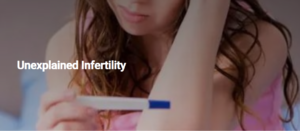Endometriosis is a gynecological condition in which uterine lining tissue grows outside the uterus in places like ovaries, fallopian tubes, pelvic cavity and rarely in intestines, bladder, scar tissues etc. This condition occurs in adolescents and reproductive-aged women between 15 to 44 years. The uterus lining growing in these areas does not shed during menses as uterus lining inside the uterus does. In every menstrual cycle it breaks down and bleeds outside the uterus and gets trapped and forms the painful lumps, cysts and big masses which stick together.
Types of Endometriosis
- Superficial endometriosis – Uterus lining tissue is superficially present on surface of organs.
- Endometriomas – Uterine lining tissue is present inside the ovary which forms chocolate cyst.
- Deep endometriosis – Uterus lining tissue invades the organs either within or outside the pelvic cavity. It forms the lumps and masses which stick together and leads to frozen pelvis.
Signs and Symptoms of Endometriosis
- Painful periods (dysmenorrhea)
- Pain with intercourse (dyspareunia)
- Pain with bowel movements or urination
- Excessive bleeding during periods or bleeding between periods (intermenstrual bleeding)
- Infertility
- Other signs and symptoms – fatigue, diarrhea, constipation, bloating or nausea, rectal bleeding especially during menstrual periods.
Endometriosis can be confused with pelvic inflammatory disease (PID), irritable bowel syndrome (IBS) etc.
Endometriosis and Infertility
Endometriosis affects the egg quality when present in ovaries. It causes tubal block by distorting the anatomy of pelvis or by making tubo-ovarian mases. It alters the immune system functioning and impairs the implantation of a pregnancy.
Diagnosis
Endometriosis can be diagnosed by ultrasound, MRI pelvis and laparoscopy. Laparoscopy gives the confirmed diagnosis of endometriosis and informs about amount, location and depth of endometriosis and gives score. The score determines that endometriosis is minimal (Stage 1), mild (Stage 2), moderate (Stage 3), or severe (Stage 4) and correlates with pregnancy success rate. Women with severe (Stage 4) endometriosis causes scarring, blocked fallopian tubes and damaged ovaries in which advanced fertility treatment is required.
Fertility Treatment in Endometriosis
There is no cure of endometriosis. There is a symptomatic treatment for the same which depends on age, overall health, symptoms and other factors. Treatment modalities include medicine, surgery or both.
Fertility treatment depends on presence or absence of pain symptoms, patient age and preferences, history of previous surgery, presence of other infertility factors, ovarian reserve, and estimated Endometriosis Fertility Index (EFI) score.
In stage 1 and 2, as tubal function is maintained and if age is young with no other infertility factor, then controlled ovarian stimulation (medications for egg formation) with natural try or intrauterine insemination (IUI) can be tried for 3 to 6 months.
In stage 1 and 2, with advanced female age, compromised tubal function, male factor infertility, failed other treatments and in stage 3 and 4, IVF is recommended.
During IVF Treatment
- Hormonal suppression in the form of GnRH agonist should be given prior to IVF. Long protocol egg stimulation should be recommended.
- If endometrial cyst > 4cm, laparoscopic cystectomy should be done before IVF to improve endometriosis-associated pain or the accessibility of follicles. Risks of reduced ovarian function after surgery should be informed to couple.
- Antibiotic prophylaxis should be given at time of oocyte retrieval.
The couple should consult fertility doctor immediately when planning for pregnancy with the condition of endometriosis.
https://www.advancefertility.in/endometriosis-and-fertility/




